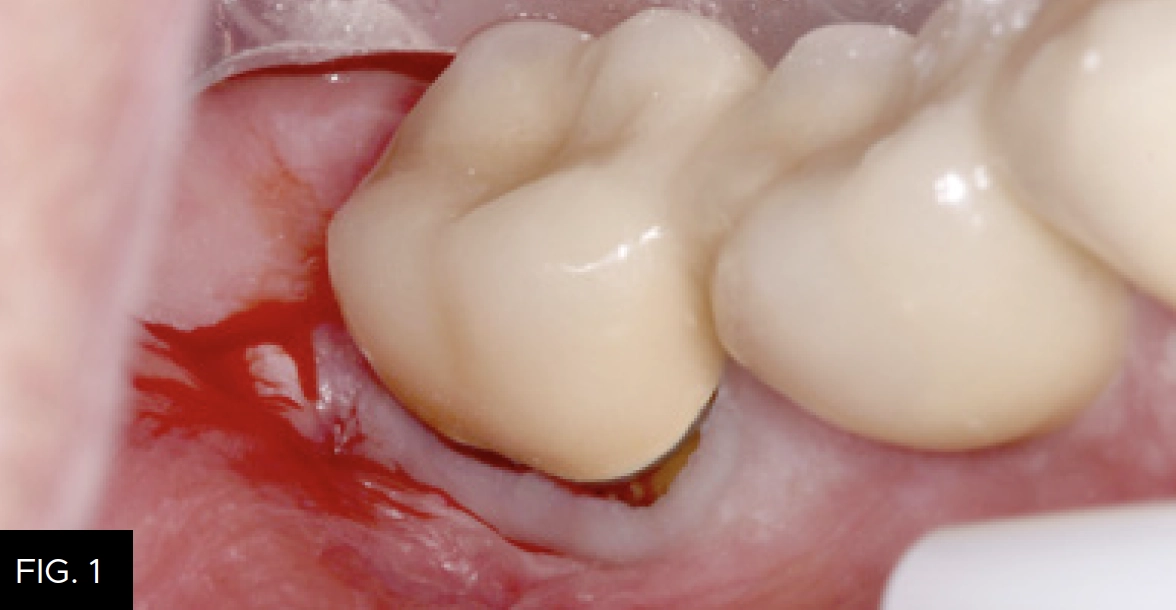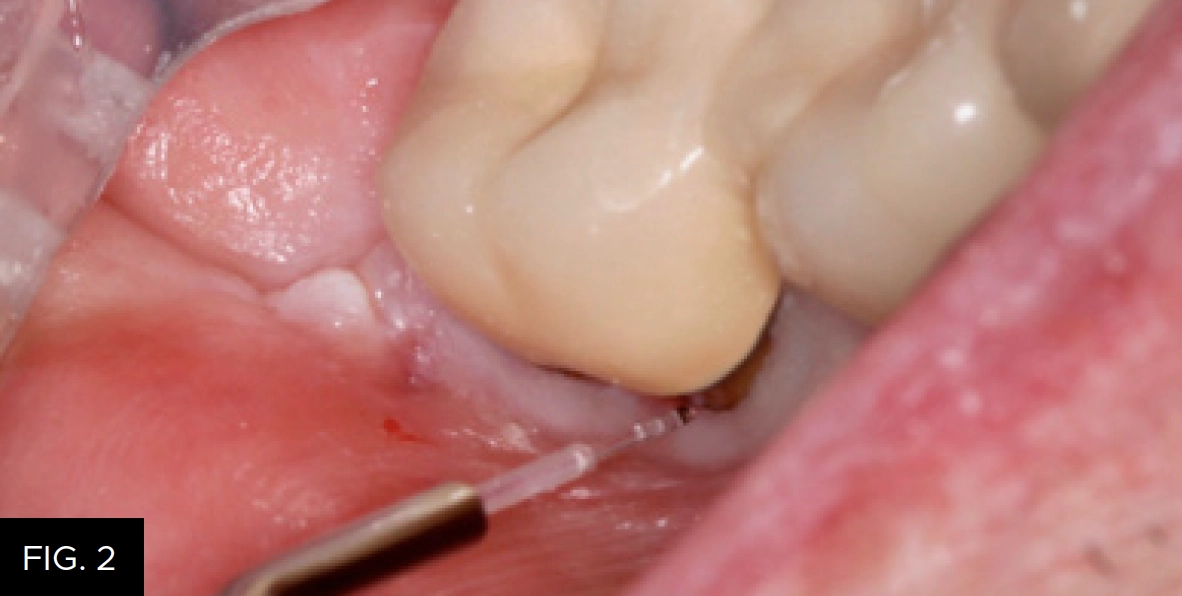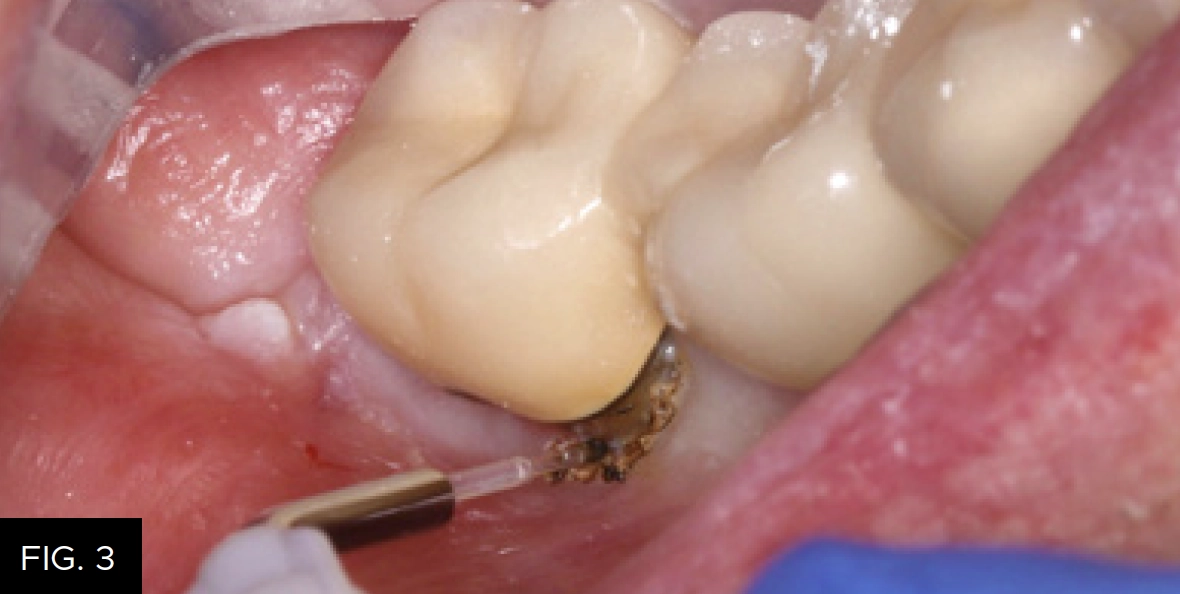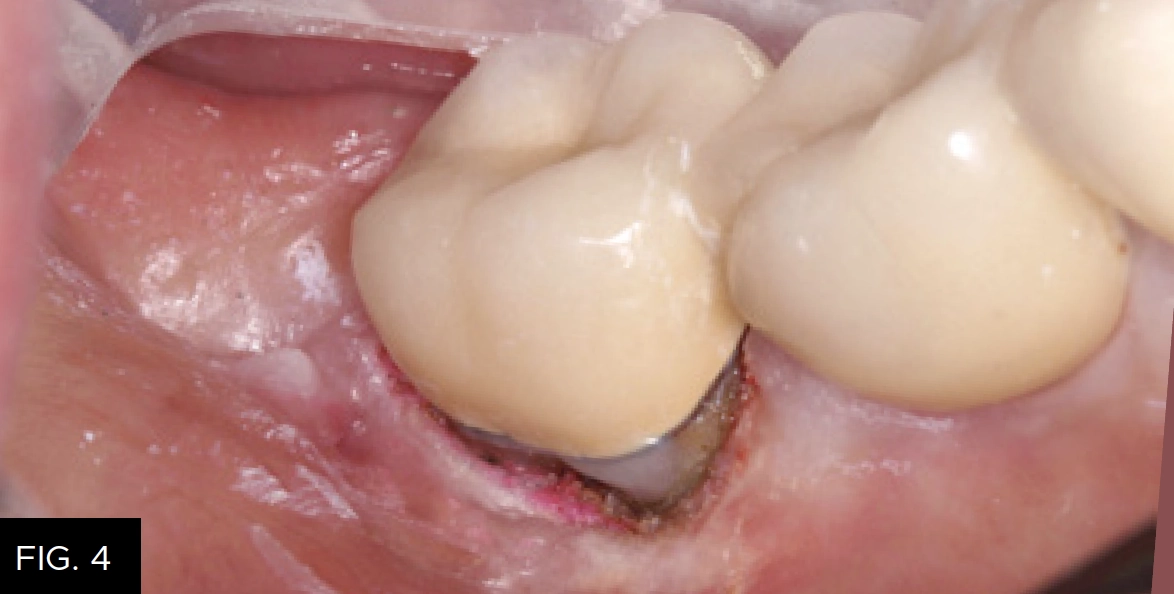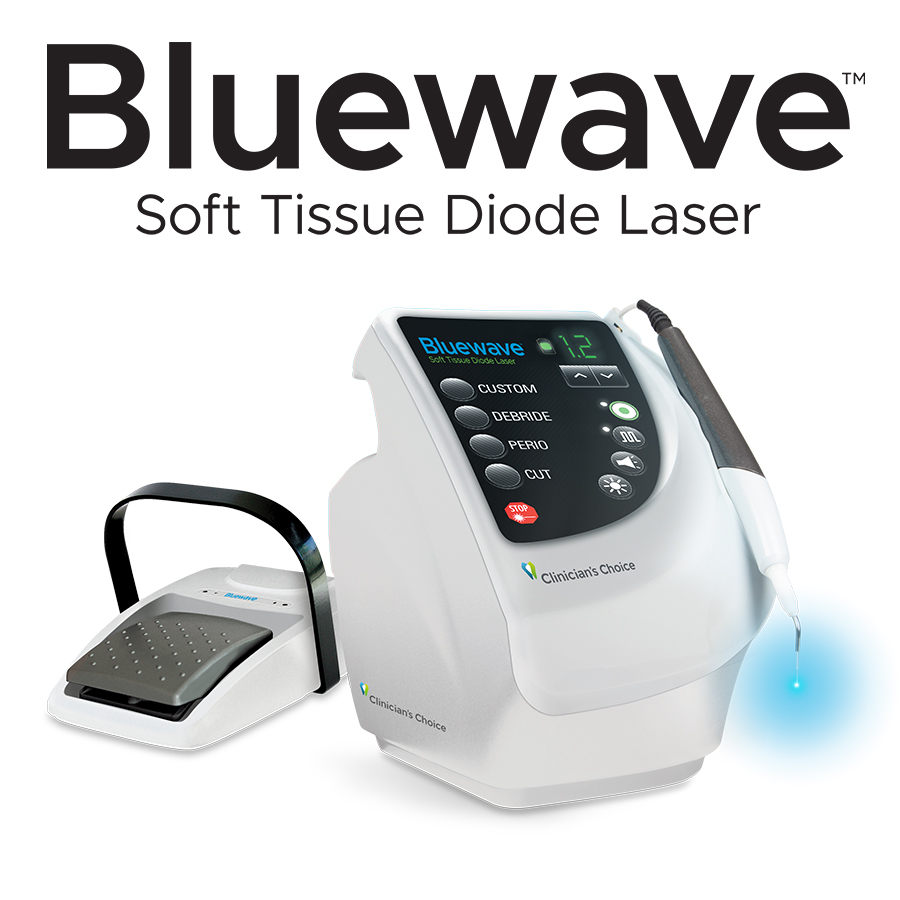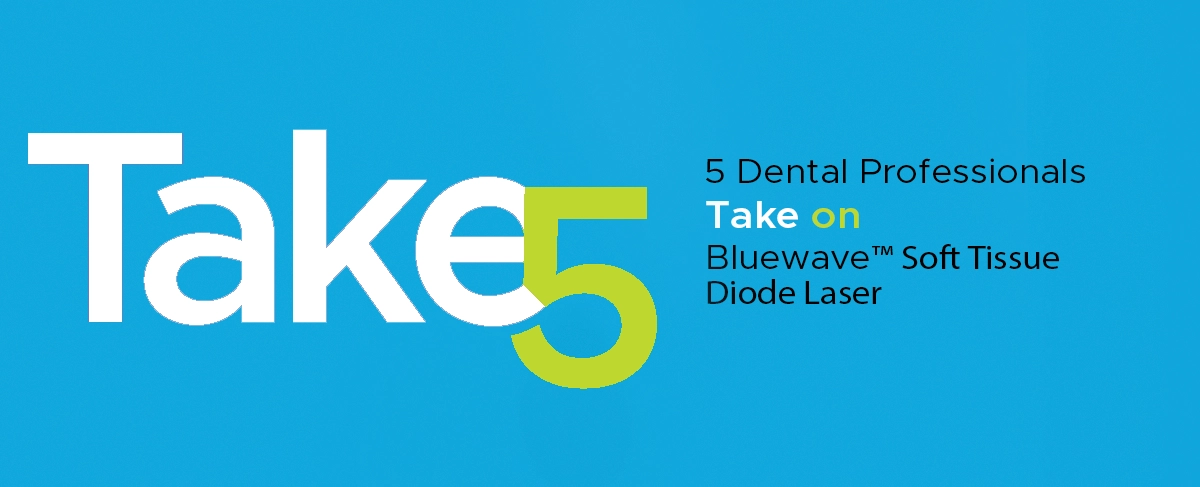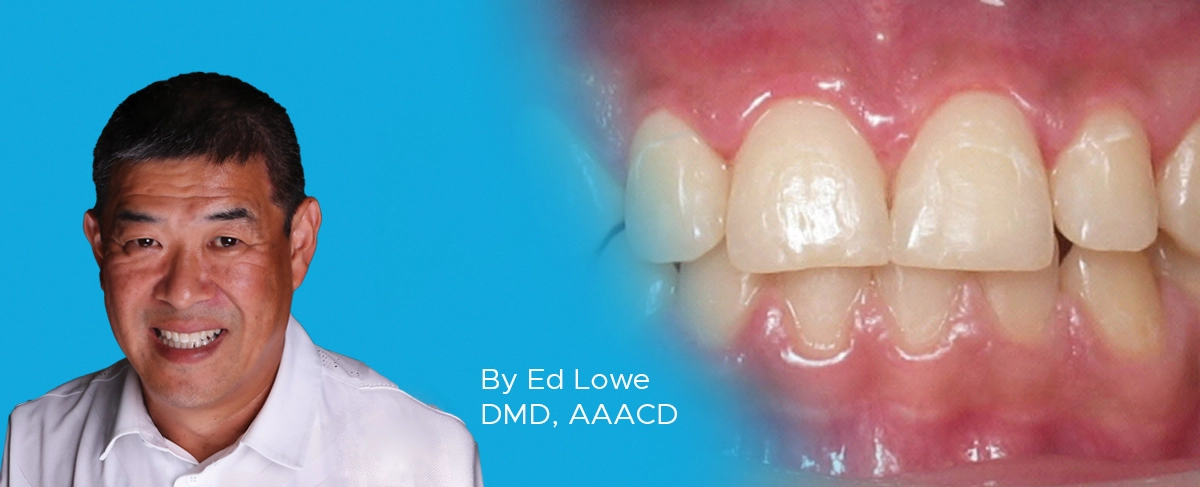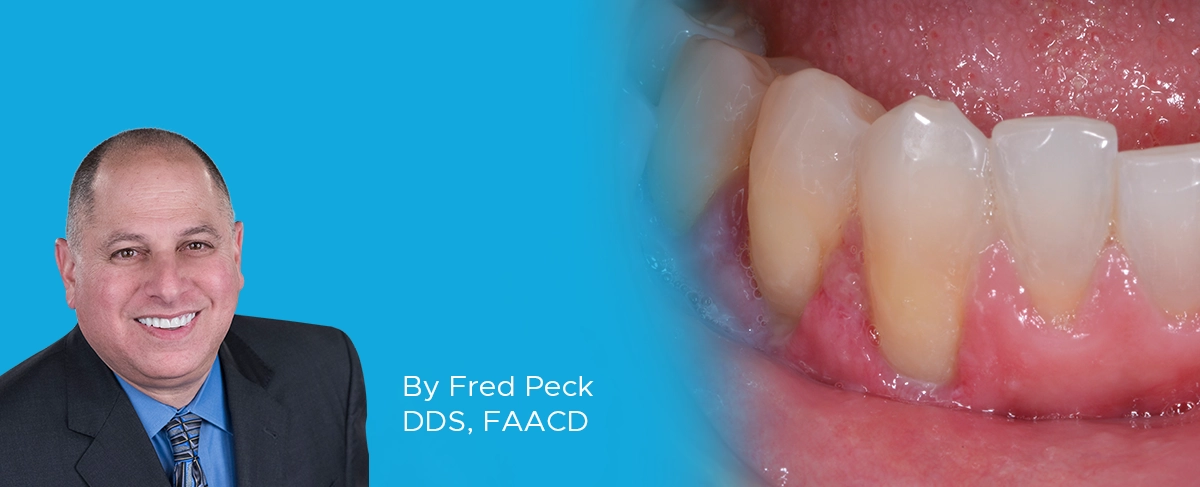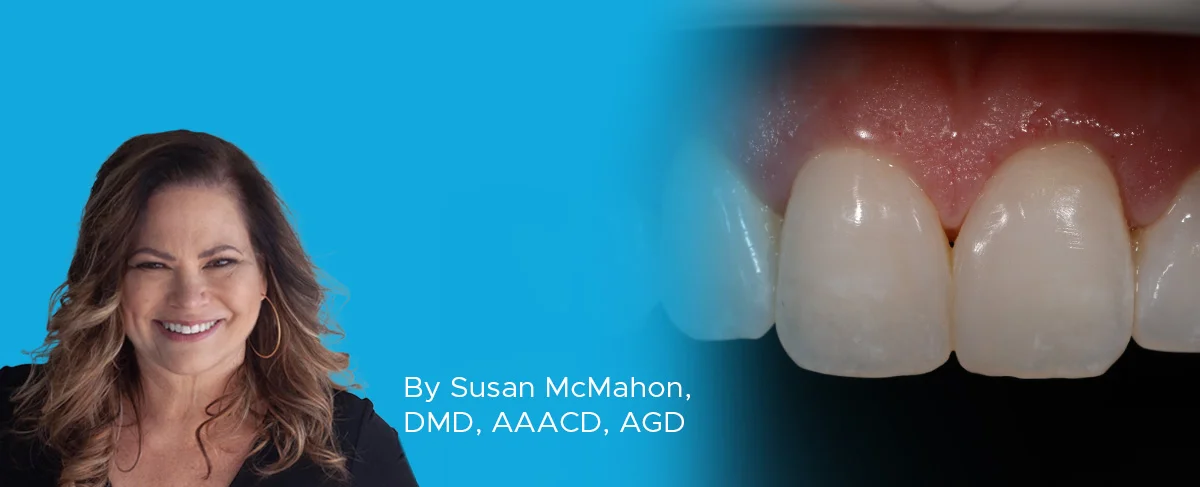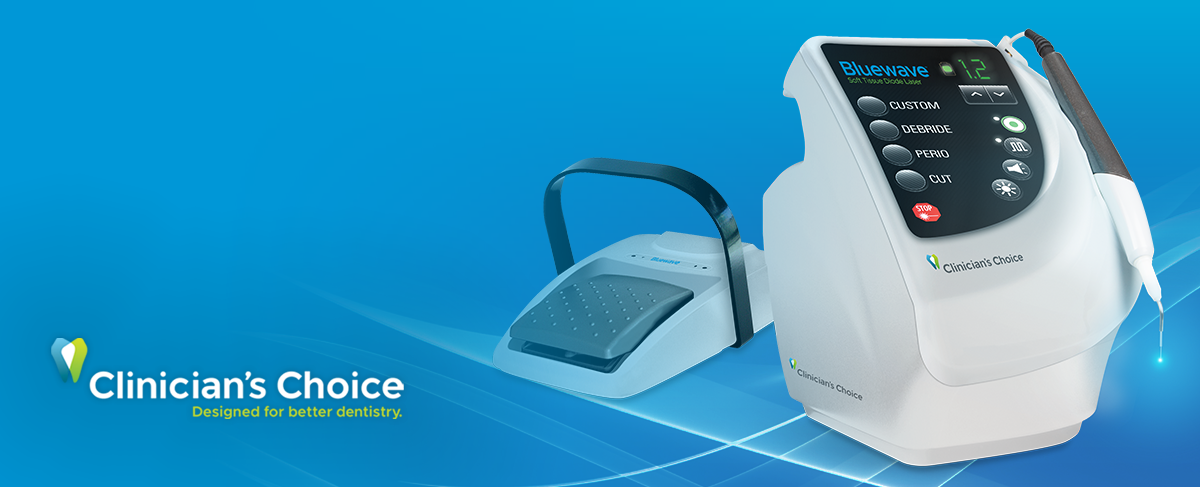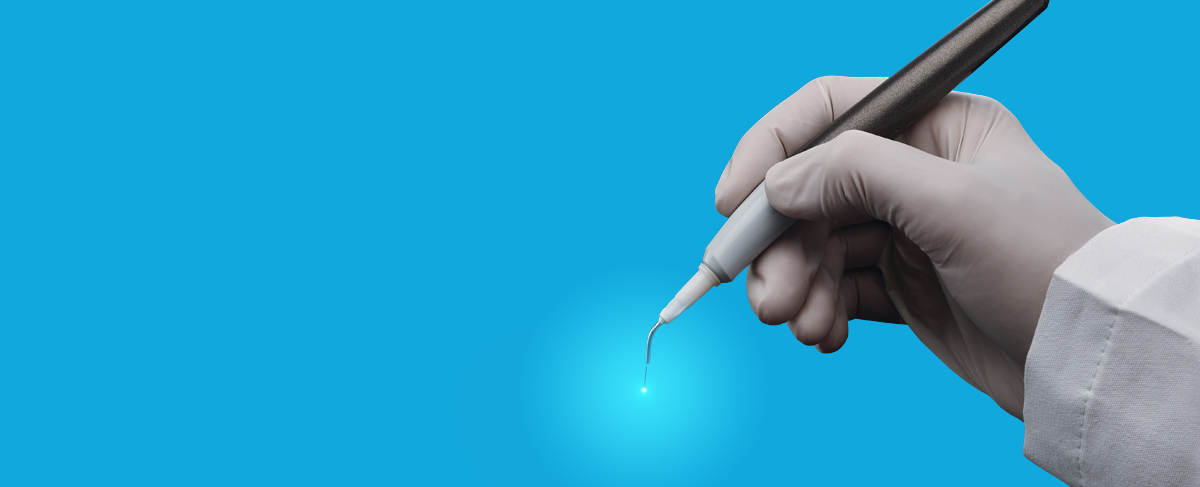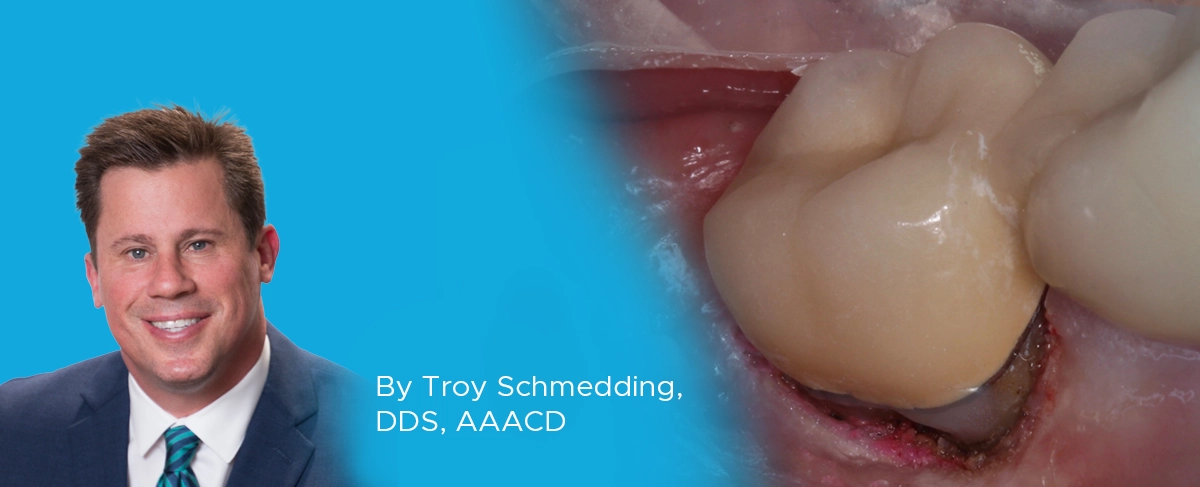
Utilizing a Soft Tissue Diode Laser for a
Direct Resin Restoration
Direct Resin Restoration
Diode lasers are becoming increasingly utilized in dental practices, both because they are less expensive to implement than CO2 and Nd:YAG lasers and due to the wide range of effective treatments afforded by these devices. Soft tissue laser uses include sulcular debridement, reduction of bacterial levels in periodontal treatment, biopsies, frenectomies and gingivectomy procedures to name a few. The use of lasers as an adjunctive or alternative option can help facilitate treatment and has the potential to improve healing and outcomes. Potential advantages over conventional methodologies include improved precision and visualization, less discomfort for patients as well as greater hemostasis for the operator to deliver ideal results. Lasers are becoming an adjunctive treatment methodology, as well as a stand-alone addition to the traditional dental armamentarium.
Diode lasers such as the Bluewave (Clinician’s Choice) provide sufficient power to modify soft tissue or alteration of the gingival margin to improve the working field of the operator while working in a temperature range recommended to avoid negatively affecting osseous support. The 810 nm diode laser is engineered to make laser therapy truly convenient and expedient. Featuring a long-lasting lithium-ion battery, light-weight design, and wireless foot pedal, the Bluewave is truly portable and allows the clinician to move between operatories with ease. Three intuitive and easy-to-use settings simplify treatment protocols, with an additional custom setting for individual user’s preferences. Its unique blue aiming beam produces higher contrast on oral tissues and blood than the traditional red beam for enhanced visibility and efficiency. The curved, ergonomic contours of the handpiece provide better posterior access in multiple positions, reducing hand fatigue during longer procedures. Disposable tips eliminate the inconvenience and inconsistency of strip-and-cleave systems.
The case we highlight is one of the many opportunities for which a soft tissue laser can be utilized to provide an optimal outcome. In this particular case we find ourselves making a decision on whether or not we can restore this tooth without having to replace the existing restoration. Mesial buccal decay under an existing crown can provide a challenge for any clinician. (FIG. 1)
Patient’s age and financials being an issue, it was decided to repair the existing crown with a direct resin restoration. Being able to control the environment, a DryShield (DryShield) was placed and my 4mm Bluewave fiber tip was initiated with aid of carbon paper. (FIG. 2)
Working from the pre-set “cut” button, I slowly began to remove the necessary tissue needed to allow for the proper access for decay removal as well as restoration placement. The ability of the laser to control the hemostasis in the area made it ideal. (FIG. 3)
After following my bonding protocol, we were able to place our final restoration in a stress-free environment due to the Bluewave controlling a very difficult situation. (FIG. 4)
The soft tissue diode laser has become a “must have” mainstream technology for every general practice. The science, ease of use, and affordability make it simple to incorporate. The laser is now the essential “soft tissue handpiece” for my practice.
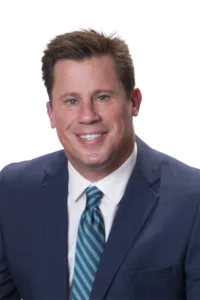
ABOUT THE AUTHOR
Dr. Troy Schmedding is a 1993 honors graduate of the Arthur A. Dugoni School of Dentistry in San Francisco, California. He maintains a private practice in Walnut Creek, CA. where he focuses on aesthetic and functional dentistry. An Accredited member of the American Academy of Cosmetic Dentistry, he lectures both nationally and internationally on aesthetics and restorative materials. He has also written and published
numerous articles on restorative materials and protocols in numerous dental magazines. Dr. Schmedding also serves as a Key Opinion Leader for numerous manufacturers, helping develop and bring new products to market.
Share This Article! Choose Your Platform
Products Mentioned in this article
Related Articles
Take 5: 5 Dental Professionals’ Take on Bluewave™ Soft Tissue Diode Laser
5 Dental Professionals Take On Bluewave™ Soft Tissue Diode Laser.
Ask the Expert: An Interview with Ed Lowe, DMD, AAACD on Soft Tissue Diode Lasers
By Ed Lowe, DMD, AAACD
What type of clinical procedures can be done with a soft tissue diode laser?
Treating Decay Subgingivally with the Bluewave™ Soft Tissue Diode Laser
By Fred Peck, DDS, FAACD
Every day, dentists encounter decay in areas of the mouth where the teeth are a challenge to effectively treat, due to the decay extending beneath the gingival tissue. Saving these teeth is beneficial to the patient in maintaining function and esthetics, even more so if it can be done in a cost-effective manner.
Gingival Sculpting with a Soft Tissue Diode Laser
By Susan McMahon, DMD, AAACD, FAGD
With today’s selfie culture, more and more patients are requesting improved or idealized cosmetics. Often times what appears to be small changes can give big results and happy patients.
Choosing a Laser: What Features Should You Consider? – Clinical Article
Having the right technology in your office is essential for running an efficient, state-of-the-art dental practice. In some cases, it can mean the difference between referring a patient to a specialist and being able to deliver same-day-dentistry in the environment where your patient is most comfortable. On the business side, the cost of this additional technology must be weighed against its return on investment and the speed at which this occurs. From the clinical perspective, consider what advantages this technology will bring for the clinician and the patient, and how will it improve the procedural outcome.
Choosing a Laser: What Features Should You Consider?
Choosing a Laser: What Features Should You Consider? Having the right technology in your office is essential for running an efficient, state-of-the-art dental practice. In some cases, it can mean the difference between [...]

